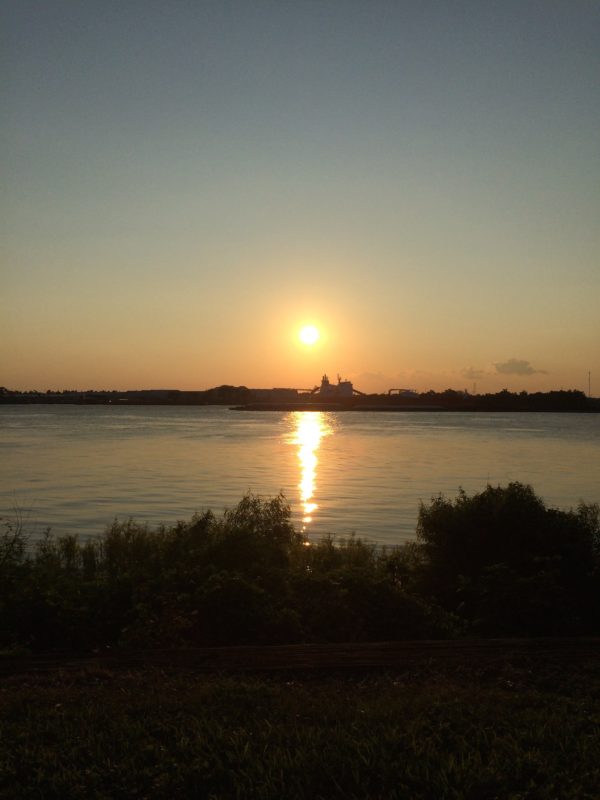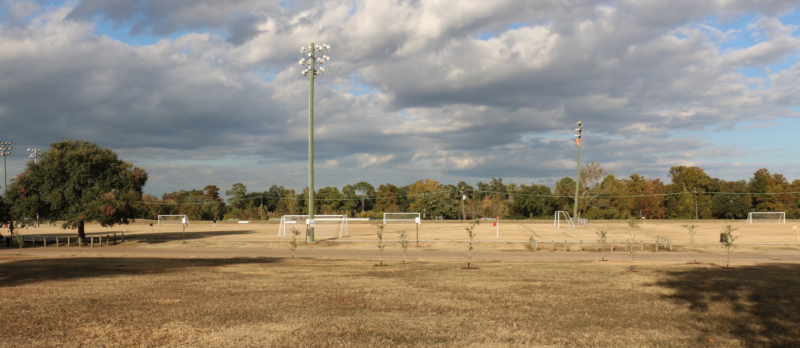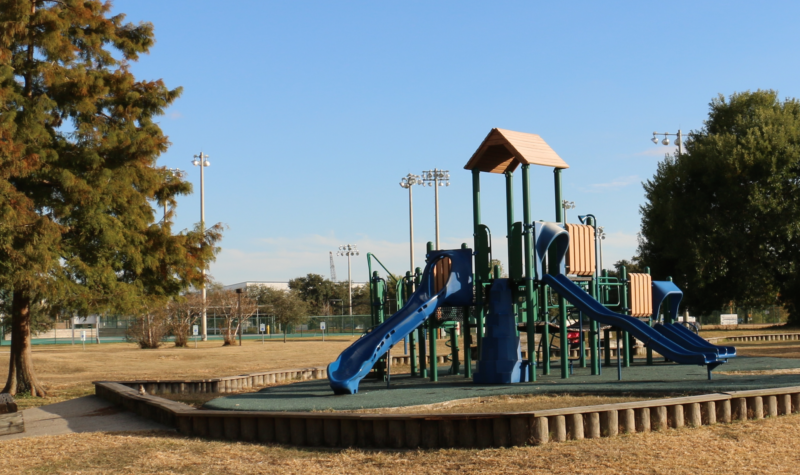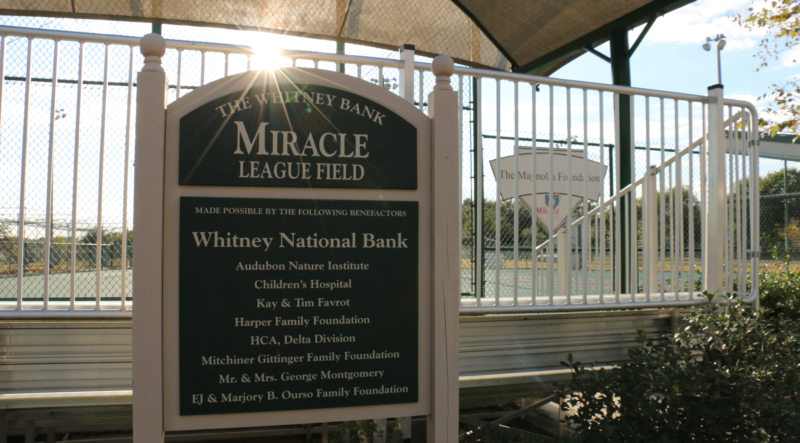Editor’s Note: 85% of the US population owns a smartphone(statista). This adds to the constant busyness of lives and makes it hard to unplug; it can also lead to unneeded stress. According to a 2019 study published in Scientific Reports, spending at least 120 minutes in nature a week is associated with good health and decreased stress (White et al). In other words, sometimes we are in need of a stroll through the park, so that’s what we’re giving you. The following is a collection of articles about different parks in New Orleans. The collection features historical articles, talking about the history of different parks; informative articles, featuring different events that can be attended at parks; and creative writing that draws inspiration from the park’s beauty. Our goal through curating this selection was to give anyone the ability to take a virtual stroll through the park. We hope this collection provides a much needed disconnect from the world, and inspires you creatively. This piece on the Fly was originally published on Oct 24, 2017.

Sunset at The Fly. Taken by Samantha Krupicka on October 10, 2014. Permission granted through Creative Commons
Authors: Thalia Skaleris, Samantha Krupicka, and Annie Heinrichs
Audubon Park ends along the Mississippi River with a landscaped area called “The Fly.” The Fly is the home of after school soccer practice, minor league baseball, college kids tanning along the river, and much more.
Historically, the levee at the end of Audubon Park known as ‘The Fly” had a long road to becoming the park destination it is today. When Audubon Park was designed in 1898, American landscape architect John Olmsted submitted a beautification proposal for the space that would take advantage of the great Mississippi view and the abundance of space. However, this proposal didn’t come into being until after 1967.
In 1933, New Deal funds were used to develop the batture up and out as a preventative measure from flooding, but didn’t fully develop the space into a place for people to spend time. A batture is technically defined as “the alluvial land between a river at low-water stage and a leveeused especially of such land along the lower Mississippi river,” which happens to be where The Fly is located. After 1933, the Audubon Park Commission allowed private firms and the public to use a landfill outside the levee in order to build it up. In addition to old refrigerators and ash from an incinerator, the landfill had carcasses from dead Audubon Zoo animals (“Batture.” Merriam-Webster. Accessed December 02, 2014. http://www.merriam-webster.com/dictionary/batture).
In 1941, another push to develop The Fly failed. An application for over $1.25 million of federal money to create a design by Frederick Olmsted Jr. brought the area near completion. Unfortunately the attack on Pearl Harbor and Word War II that occurred soon after meant the project had to be put on hold. In 1941 F. Olmsted wrote: “it is amazing and deplorable . . . that in this great city on the bank of the greatest river of the continent no long stretch of river-bank park has yet been provided from which the people of New Orleans and visiting tourists can enjoy amid pleasant and restful surroundings the world famous spectacle of that majestic steam” (Forman, L. Ronald., Joseph Logsdon, John Wilds, David K. Gleason, and David Kleck. Audubon Park: An Urban Eden. Baton Rouge, LA: Friends of the Zoo, 1985. 78-82).

The Fly’s soccer field. Taken by Thalia Skaleris on November 20, 2014. Permission granted through Creative Commons.
By 1961, the landfill began to level out above the flood mark and the Dock Board began pushing for the beautification project to continue. In 1967, voters in New Orleans chose to allocate money to the project, and with the addition of federal grants, the Olmsted design was underway. Sand was piled onto the bulldozed landfill until the levee rose to 30 feet above sea level. The batture was landscaped, and The Fly took on the official name, “Audubon Landing” (Forman).
The Fly is traditionally known as Riverview Park, but came to be known as The Fly in a more colloquial manner after the development of the large concrete butterfly-like structure that used to extend over the river. This structure was built in the 1960s and featured a deck overlooking the Mississippi River, a concession stand, and a restroom, among other amenities. It was located near the present-day Audubon Zoo paddleboat landing. Unfortunately, the structure was destroyed in the 1980s by a runaway barge, but its legacy still exists today when both visitors and locals refer to the riverside spot as “The Fly”( “The Fly – Wikimapia.” The Fly. Accessed December 01, 2014. http://wikimapia.org/4327115/The-Fly ; “The Riverview.” Audubon Nature Institute. Accessed November 12, 2014. http://www.auduboninstitute.org/audubon-park/favorites/the-riverview.)
Structures and Facilities

The Fly’s Playground. Taken by Thalia Skaleris on November 20, 2014/Permission granted through Creative Commons
The Fly features multiple picnic areas and athletic fields that are accessible from 9 a.m. until 5 p.m. everyday. The picnic and sheltered areas are located throughout the park where locals celebrate birthdays, reunions, and many more occasions with a full view of the beautiful Mississippi River. The Fly also has five different athletic fields, including soccer fields and baseball diamonds, which are run and organized by the Carrollton Booster Club. One of their baseball diamonds is unique in that it is one of 200 in the United States to be expressly developed for children with special needs. This distinctive baseball diamond is located on a playing area officially known as the Whitney Bank Miracle League Field. The Miracle League Field was created through a partnership among Children’s Hospital, the Miracle League of Greater New Orleans, and Audubon Park itself. It opened to the public on September 26, 2009 when 60 disabled children inaugurated the field by participating in the first of many baseball games to be played at this location (Audubon Nature Institute).

The Whitney Bank Miracle Field. Photo taken by Thalia Skaleris on November 20, 2014/Permission granted through Creative Commons
The Miracle Field was in the planning stages when Hurricane Katrina hit in 2005. Unfortunately, due to the extensive damage caused by the storm, plans for the construction of the area were put on hold. However, in January 2009, the building of the field began, and as previously stated, it was able to be played on by September of that same year. The surface of the field is rubberized, which means that it is safe for walkers, wheelchairs, and children with braces. Children up to 6 years and older are able to play on the field, and are considered members of a league designed to give those with moderate to severe disabilities the chance to participate in and excel at sports like baseball and soccer (Stroup, Sheila. “Miracle League Gives Kids with Special Needs a Turn at Bat.” NOLA.com. May 15, 2012. Accessed November 12, 2014. http://www.nola.com/family/index.ssf/2012/05/miracle_league_gives_kids_with.html).








